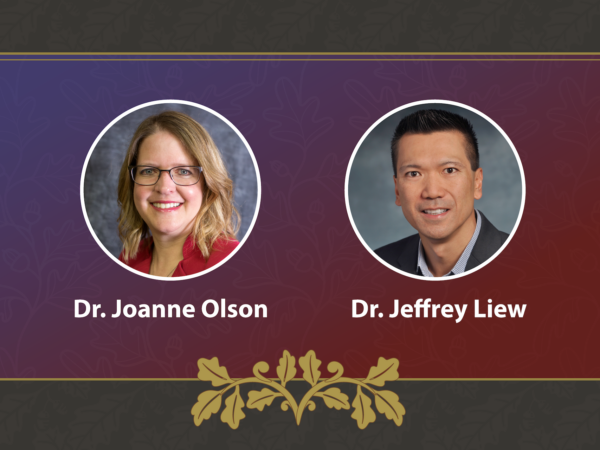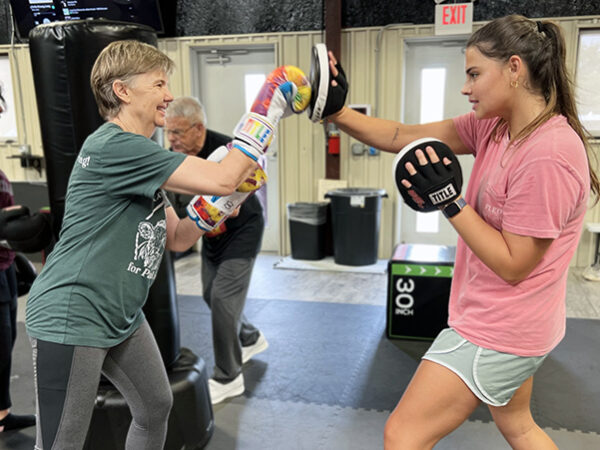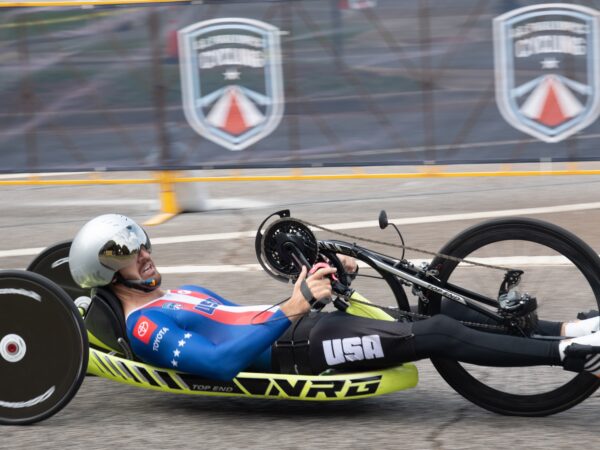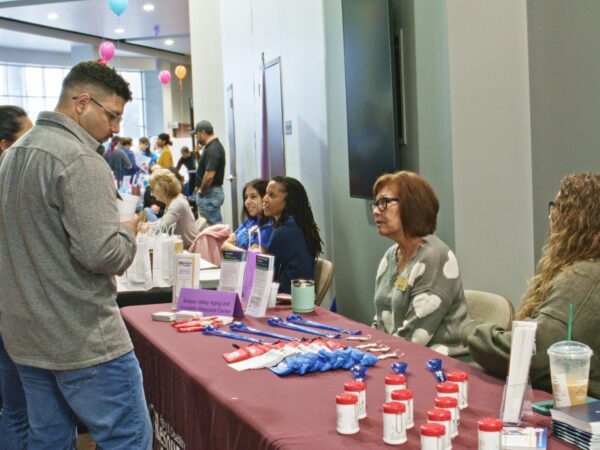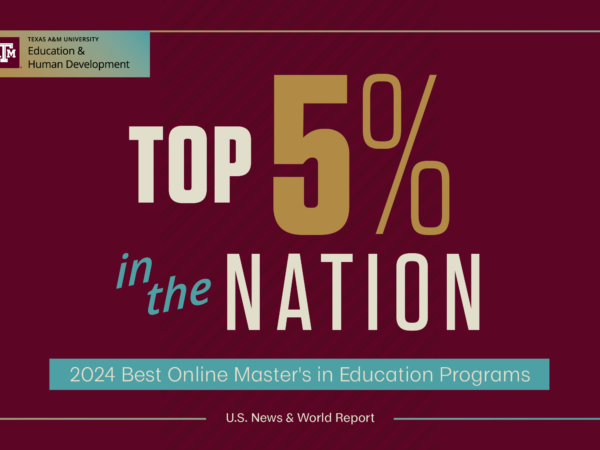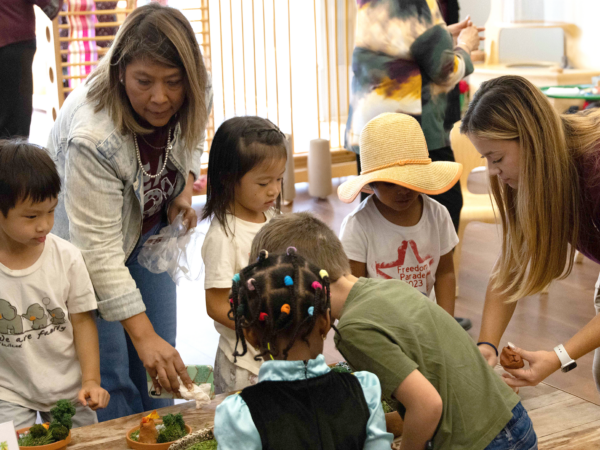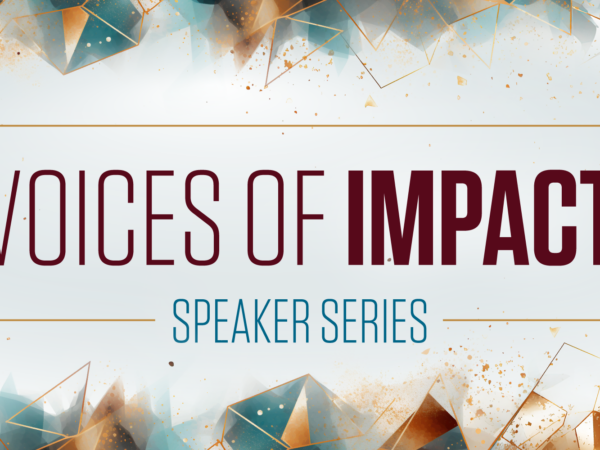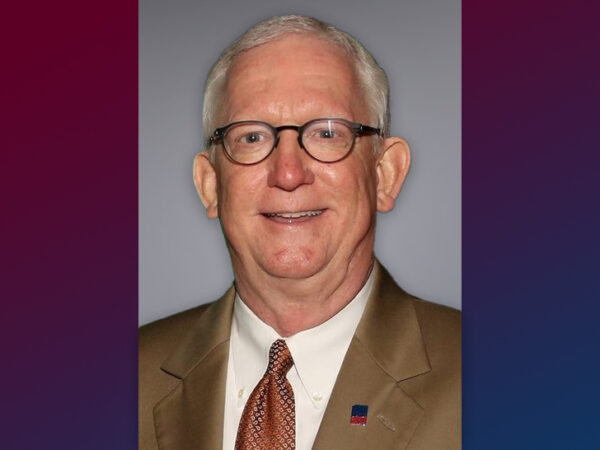Education and Research
In the college, our approach to STEM is interdisciplinary. We are generating and distributing new knowledge in health science, improving K-12 science and math education, preparing future innovators and equipping students to pursue STEM careers and become more-informed consumers.
PLANT SCIENCE APPROACH TO STEM EDUCATION
They are all around us – in our houses, our yards and on our dinner plates. We often overlook these helpful organisms known as plants. And now they also have a classroom use.
In 2006, the PlantingScience project launched with an initiative to engage the next generation of scientists and provide middle and high school students mentoring opportunities with plant scientists.
The program is a collaboration of the College of Education and Human Development, the Botanical Society of America and the National Science Foundation. PlantingScience is an integrative project that incorporates many of the components necessary for STEM education.
The online resource provides an enriched science-learning environment where teachers and scientists collaborate to motivate students by providing them hands-on and technology-enhanced projects.
The project also addresses the National Research Council (NRC) and National Science Teachers Association (NSTA) Next Generation Science Standards by working to strengthen the K-12 science education framework – specifically in the areas of science literacy, career orientation, college readiness and diversity in STEM education.
To date, the project has involved 12,000 students, 900 scientist mentors, 38 U.S. states and four foreign countries. In 2011, the PlantingScience project was awarded the Science Prize for Online Resources (SPORE) award. The award serves as recognition for innovation and excellence in education, as well as the use of high-quality online resources available to students, teachers and the public.
Students involved with the project explore the nature of scientific inquiry through classroom projects investigating aspects of plant growth and development. They post their data and research in online journals and discuss findings with a scientist mentor through the website. The scientists provide feedback and suggestions while sharing their knowledge about plant science and their profession. Some students also conduct experiments with FastPlants, which are genetically engineered for short lifecycles.
Dr. Carol Stuessy, associate professor of science education in the department of Educational Psychology, has been part of the program from the beginning and enjoys working as co-principal investigator and director of the research and instructional training workshops for teachers held in the summer at Texas A&M.
Stuessy and a team of scientists and graduate students work with teachers during the workshops to familiarize them with laboratory procedures, provide instructions on how to facilitate open inquiry science projects in the classroom and present an overview of the PlantingScience website (plantingscience.org) to encourage open communication between students and scientists.
During the project, graduate students provide additional classroom support for teachers conducting research on student learning outcomes, gaining knowledge about plants and developing autonomy with their experiments.
The opportunity for students to work with real laboratory science is more than learning to classify insects or memorizing a chemistry chart. “PlantingScience enriches students’ understanding of science, exposes them to doing research themselves and enables them to learn more about science careers from practicing scientists,” says Stuessy. “In the long run, all of this works toward creating a generation who are science literate and knowledgeable about plant-related careers.”
For more information:
- Carol Stuessy at c-stuessy@tamu.edu
- plantingscience.org
DEVELOPING NEW APPROACHES FOR IMPROVING TEACHER PREPARATION IN MATHEMATICS
A change in the way teachers learn math may improve their students’ math skills, according to Professor of Mathematics Roger Howe, a Texas A&M University Institute for Advanced Study (TIAS) Faculty Fellow and visiting professor in the department of Teaching, Learning and Culture. Dr. Howe is a professor of mathematics at Yale University and is a member of the National Academy of Science.
Howe has been working with faculty and students in the department of Teaching, Learning and Culture and the department of Mathematics at Texas A&M to develop a new approach to teacher preparation. This initiative is designed to improve U.S. mathematics education through curriculum standards-based teacher preparation courses. By challenging the current programs for mathematics, he wants to increase collaboration between mathematics and education departments and ultimately improve student thinking and problem-solving
Howe says at good programs, such as Texas A&M’s, aspiring elementary school teachers are required to take two semesters of math classes to learn the abstract principles they’ll be teaching to students. A one-semester methods course follows, in which they learn how to teach those principles.
He believes it is important that teachers understand how mathematical knowledge develops through the elementary school years, how the different parts of mathematics – especially arithmetic and geometry, interact with each other, and how to build strong connections between these topics as students learn more about each.
Howe suggests a change in curriculum whereby the methods are incorporated into the math classes, rather than taught separately. “This change has been made possible by the recent creation of curriculum standards documents, such as the TEKS, that describe what math students should master, grade-by- grade,” Howe explains. “So a course can follow the standards and focus on the question: at each level, what should students learn to prepare for the next level?”
Many teachers are not very enthusiastic about math because they don’t understand it, Howe finds. “When they’re taught math fundamentals, there is a very low absorption rate,” he notes. “And when it’s not connected to the classroom, they have trouble turning what they’ve learned into effective lessons for the students. The more I have studied curriculum, the more I’ve realized that teaching shouldn’t be separated from the subject matter. Math knowledge for teaching should grow throughout a teacher’s career.”
“With a good set of blueprints available for K-12 mathematics, the way may be open for an alternative, possibly more effective approach to teacher preparation,” says Howe. “The idea would be to construct a sequence of three courses as specified by curriculum standards that integrate math courses and methods into a coherent whole for teachers to take each year through the elementary curriculum.”
Howe also addresses ‘math anxiety,’ a common problem among American students. He says he often hears complaints from people who say “I’m just not good at math.”
Howe says that anyone can be good at math with the right instruction and attitude.
Howe says that anyone can be good at math with the right instruction and attitude. “You were taught not to like math − that’s part of the American psychology,” he notes. “But with the proper instruction and the belief that ‘if I try harder, I will learn this,’ you can be successful.”
Developing new approaches to teacher preparation in mathematics may also produce more mathematicians who think about K-12 curriculum on an ongoing basis. “This could lead to continuous improvement, which has been lacking in U.S. math education and may lead improvements in the standards themselves,” says Howe.
EARTHQUAKE GAME SHARPENS MINDS FOR DISASTER RECOVERY
Thanks to a board game designed by science education doctoral student Abigail Perkins, communities may have a new way to prepare for recovery after an earthquake.
Perkins was a graduate research assistant and coordinator for the Earthquake Engineering Education Project (EEEP) workshops. As part of her research and development dissertation on educational gaming, Perkins and her advisor Dr. Carol Stuessy began designing a board game based on disaster recovery following an earthquake. Stuessy is an associate professor of science education in the department of Teaching, Learning and Culture.
The game invites players to develop an urban environment that reduces loss of property and lives following an earthquake. Perkins incorporated information about urban infrastructure, city council type decision-making in a democratic society, stewardship of urban areas and resources and integrated a variety of STEM-related careers.
“It is designed to enhance a player’s creative and critical thinking, planning and all sorts of higher-order thinking skills,” says Perkins. She had teachers play the game during an EEEP workshop, then interviewed them and used the data to improve the game.
Anchored on earthquake engineering, the game could be used by teachers to show students how to apply engineering in real-life scenarios and to provide opportunities to practice 21st century workplace skills.
During the game, players work in one of four game groups, drawing cards to serve as members of a city council. Each group works together while competing against the other city council group. Players choose what to build in their city and how to manage resources. There are collaborative and competitive aspects, says Perkins, and the learning experience is different for every player and team, based on what they want to get out of the experience. At the end of the game, the group with the most ‘people points’ wins.
The game also incorporates plenty of career references. For example, building the best earthquake resilient structures may cost more. So players need people to develop codes and inspectors to ensure the codes are followed.
We get this idea that engineers work alone, but they are socially involved with all kinds of other people – architects, building framers, landscape architects.
“We get this idea that engineers work alone, but they are socially involved with all kinds of other people – architects, building framers, landscape architects. All this comes together in the game to provide real-life scenarios,” says Stuessy.
During development, Perkins started with eight focus groups that included engineers, science educators and ‘gamers’, and recorded them all. “They provided great strategic feedback, especially the gamers. We then built and tested the game with teachers,” notes Perkins. She listened to teachers’ and high school students’ dialogue about how they made decisions, analyzed the interviews, made the according modifications and created a prototype game for high school students to play.
Lisa Rachal and Gary Fry, researchers in the Zachry Department of Civil Engineering, were involved in the engineering component of EEEP. Last summer, they produced a high-quality, ready-to-use version of the game that was presented at a conference in the fall.
But how would one implement this type of game play into the classroom? Texas is home to 70 T-STEM academies and seven blended early college high school T-STEM academies serving more than 40,000 students across the state. Stuessy thinks these would be ideal for implementing the game.
“The game could also be modified for use in a variety of environments and disciplines, for volunteer groups or even soil science students,” Stuessy explains. “To prepare for a career and understand your job, it is important to know about money, about people, about how much things cost, when things are applied, about timetables.”
During an evaluation where two groups of high school students played the game, Perkins indicated they seemed to be having fun, “You have to play the game several times—that is how it is built, so the point of the game is the process, not the end.” Players learn more each time. The students played the game once. “We brought in pizza for dinner. It came a little early, so I asked if they wanted to stop and pause and finish the game later,” she says. “They didn’t even hear me. In fact, two of the students who had just finished a tennis tournament waited to eat until they finished the game first!”
Through her research, Perkins hopes to integrate games such as this into a more widespread school curriculum and educational spectrum.
The Earthquake Engineering Education Project (EEEP) strives to increase earthquake engineering literacy by integrating knowledge, skills and tools into the science, technology, engineering and mathematics (STEM) classroom and is funded by the National Science Foundation (NSF-0936599).
GENERATING NEW KNOWLEDGE IN HEALTH SCIENCE
From research factors that contribute to childhood obesity, investigating cardiovascular disease or determining the effects of protein on individuals and older adults, the college is involved in generating new knowledge in health science to address important health issues. The following is a sampling of ongoing research across the college.
Widely recognized as a serious public health concern, the problem of childhood obesity has been linked to long-term health risks. In 2013, the American Medical Association classified obesity as a disease. In separate studies, Dr. Jeffrey Liew, associate professor of educational psychology, and Dr. Lisako J. McKyer, who created and oversees the Child & Adolescent Health Research Lab (CAHRL) in the Department of Health and Kinesiology, are approaching the problem from similar angles.
Working with researchers in other universities, Liew’s latest study contributes to research on parental controls in child feeding and body compositions with implications for programs and interventions to promote development of healthy eating habits and obesity prevention strategies.
For McKyer, the majority of her current research efforts focus on familial (parents, siblings), physical and other factors such as friends and peers that influence childhood obesity/overweight and nutrition. With grants from the National Institutes of Health, including and the National Center for Minority Health and Health Disparities, CAHRL is working to improve knowledge and translate research findings into practice related to child and adolescent health issues and disparities.
Dr. Nicolaas Deutz directs the Center for Translational Research in Aging and Longevity (CTRAL). CTRAL’s research focuses on nutrition, exercise, and metabolism in relation to aging and the common diseases of an aging population, including cancer, heart failure and cystic fibrosis. They are investigating the role of nutritional support and metabolism in the pursuit of healthy aging and developing new knowledge on the role of certain macronutrients and how changes in nutrition can affect outcomes in disease and aging.
Deutz and Dr. Timothy Lightfoot, director of the Sydney and J.L. Huffines Institute for Sports Medicine, Department of Health and Kinesiology are lending their research findings and expertise as part of the new cross-institutional initiative known as the Center for Translational Environmental Health Research (CTEHR).
The center, which is one of only 21 centers of excellence in the country, will serve as the cornerstone for integrated environmental health research, translation of research advances into practice and community outreach and engagement aimed at improving human health.
“The research performed at CTRAL is unique and is the link between the basic research and community research in CTEHR. Our approach in determining changes in metabolic pathways in humans will increase our understanding of the effects of environmental influences on metabolism. In collaboration with the new center, we will help translate basic environmental research from the bench to the bedside,” says Deutz.
“It is a welcomed challenge to extend my scientific focus of considering how biology regulates physical activity to contemplating and testing how environmental aspects directly affect these mechanisms,” adds Lightfoot.
Founded in 1997 by Dr. Richard Kreider, the Exercise & Sport Nutrition Laboratory (ESNL) is dedicated to evaluating the interaction between exercise and nutrition on health, disease, and human performance, and disseminating their findings to the scientific and lay communities through research presentations and publications. Kreider’s research includes studies on the effects of supplementation and exercise, and weight loss programs on body composition, metabolism, and exercise capacity.
ESNL and CTRAL are located in adjoining facilities. Together, they provide state-of-the-art translational biomedical research facilities to conduct exercise and nutrition studies.
In the 15 labs of the department of Health and Kinesiology (HLKN), scientists conduct research that ranges from basic research in animals to applied human clinical research trials and translation of research findings to the public. They are focusing on the genetic basis of physical activity, obesity/weight loss, diabetes, cancer, aging, bone loss, exercise rehabilitation, nutrition, sports medicine and human performance in children through elderly adults and eliminating health disparities.
Their research is funded by the National Institutes of Health, American Heart Association, NASA, NCAA, Cancer Prevention Research Institute of Texas, foundations and corporations like Curves International. Their findings and results make a worldwide impact on transforming lives around the world.
For media inquiries, contact our Media Relations Coordinator, Ashley Green.
Fundraising
To learn more about how you can assist in fundraising, contact Amy Hurley, Director of Development ahurley@txamfoundation.com or 979-847-9455.


